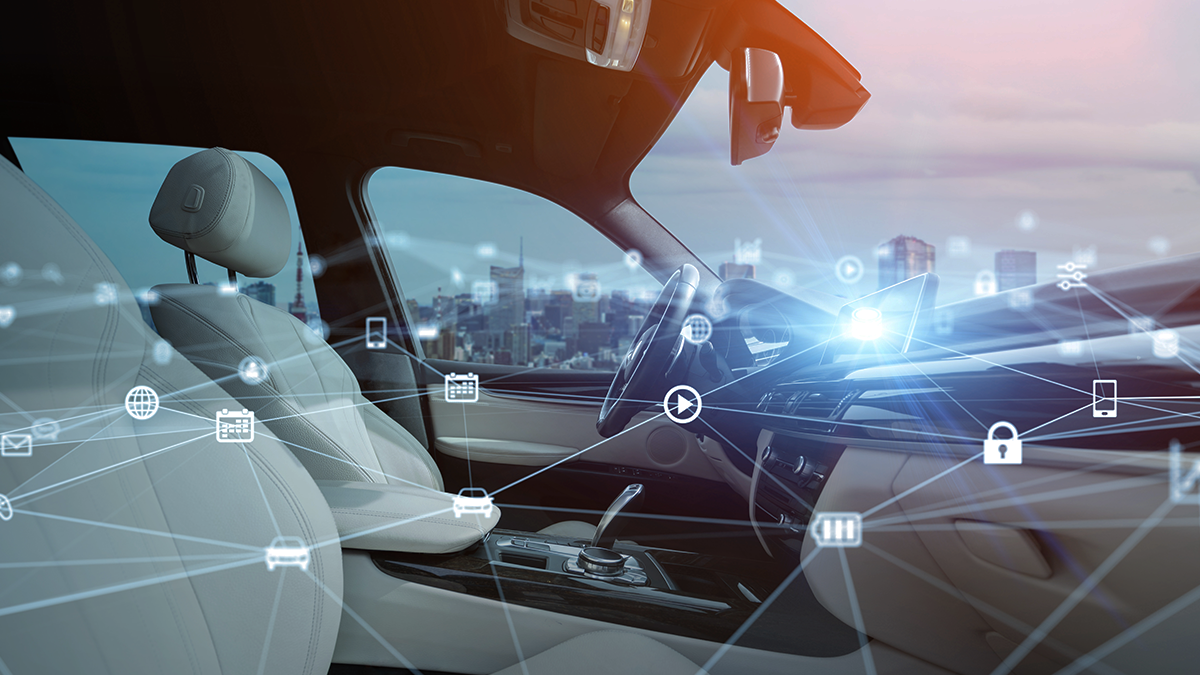As vehicles move away from being simply mechanical tools, and towards becoming complex pieces of technology, we are facing an industrial shift in vehicle development, with the focus now firmly on their integrated software. The transition to electric powertrains and an autonomous future is pushing automakers to rethink not only their model line up, but also their roles as manufacturers and how they will differentiate moving forwards.
The rapid growth of connected vehicle technology has dramatically changed the way in which vehicles are designed, developed and manufactured, with code and computing power now becoming the fundamental focus of next-generation vehicles and their software - the critical enabler for what we describe as 'the car of the future'.
VW Group CEO, Herbert Diess, said that the German marque will have to “completely change to a digital company”, if it’s to remain competitive in a fast-changing market and that the VW of the future won’t simply just make cars, it will have to continually develop software to run them as devices. In addition, according to the Wall Street Journal, as automakers have moved towards electric powertrains in recent years, “computing has become the heart of the vehicle, and no longer do mechanical components take centre stage in vehicle development, rather it’s the software tying it all together that is becoming the focus.”
PWC’s 2021 Digital Auto Report states that every second vehicle on US and European roads will be connected by 2025 - with China and Japan to follow shortly after. This means that automakers who have previously differentiated themselves from each other by their mechanical features, such as horsepower and torque, now have a new opportunity to look to integrated software solutions to stand out to consumers who are increasingly looking for valuable features from their vehicles that complement their daily lives with driver-assistance features as well as tailored services, and not merely have a device to get them from A to B.
The way in which vehicles interact with drivers’ lives has certainly now also changed, with automakers needing to provide the technology necessary to ensure positive future user experiences - as a minimum, through enhanced functionality and integration through their vehicle infotainment systems. The challenge now for the automakers is to recognise which features drivers really want, as where there is potential for enhanced features, there is also potential for additional revenue streams.
Recognising driver demand
In a future where professional drivers and chauffeurs have the potential to be replaced by autonomous self-driving systems, car owners will have high expectations, greatly in excess of smartphone levels of functionality through their in-car screens, with the added benefits of deep vehicle systems integration for heightened convenience, comfort and safety requirements. Automakers who can successfully incorporate future mobility and convenience features together into their vehicles today, will undoubtedly appeal to tomorrow’s customers.
As the industry also moves towards electrification and away from internal-combustion engine (ICE) vehicles the distribution of added value will see a tectonic shift. The highly profitable aftermarket business with spare parts and maintenance services will diminish. OEMs are already struggling to show to analysts and shareholders how they will compensate this business with future profits from FOTA, SOTA, etc. The recent Stellantis and GM announcements are just examples.
For governments, there will be a large deficit to fill, due to the lost taxes on fossil fuels. It is likely that they will try to recoup this lost revenue through ‘pay per mile’ schemes and a greater number of toll roads and congestion zones (which also help to manage their assets more efficiently). Cars will need pay-per-use capabilities to generate revenues and deal with government requirements. For automakers, in-car payment platforms, such as Parkopedia’s, will provide a simple and effective integrated solution for drivers' increased demands, with the ability to pay for services, tolls, as well as parking, EV charging and fuelling, all via a secure single sign-on solution.
The value of data
In order to monetise services, automakers need to leverage data collected from connected cars to produce an engaging and lively interface for drivers and encourage positive in-vehicle user experiences - opening up in-car commerce opportunities for proprietary and third party services and products. By continually improving their driver touchpoints to maximize the user experience, automakers will retain existing owners, and continue to capitalise on their demands for the latest services and technology. Leveraging vehicle sensor data will be critical not only in terms of nudging drivers in real-time to generate engagement and interaction, but it also provides hugely valuable insights into in-car user behaviour which will help optimize the in-car commerce propositions. The ability to harvest real-time usage scenarios offers potentially huge savings in development budgets, while user data can expedite hundreds of hours of in-car software testing, and monitor acceptance of additional systems, such as voice assistants, automated personal preferences, context-aware vehicle services and ‘useful’ driver prompts enabled by deeply integrated systems. Making sense of the vehicle data to create great user experiences will make all the difference in terms of customer loyalty and monetization.

